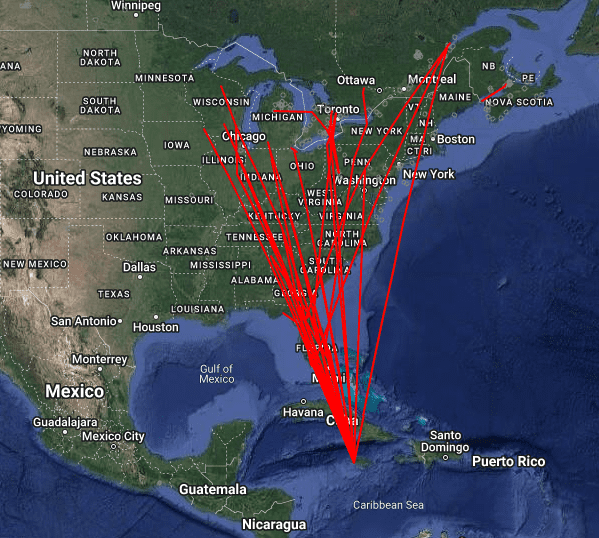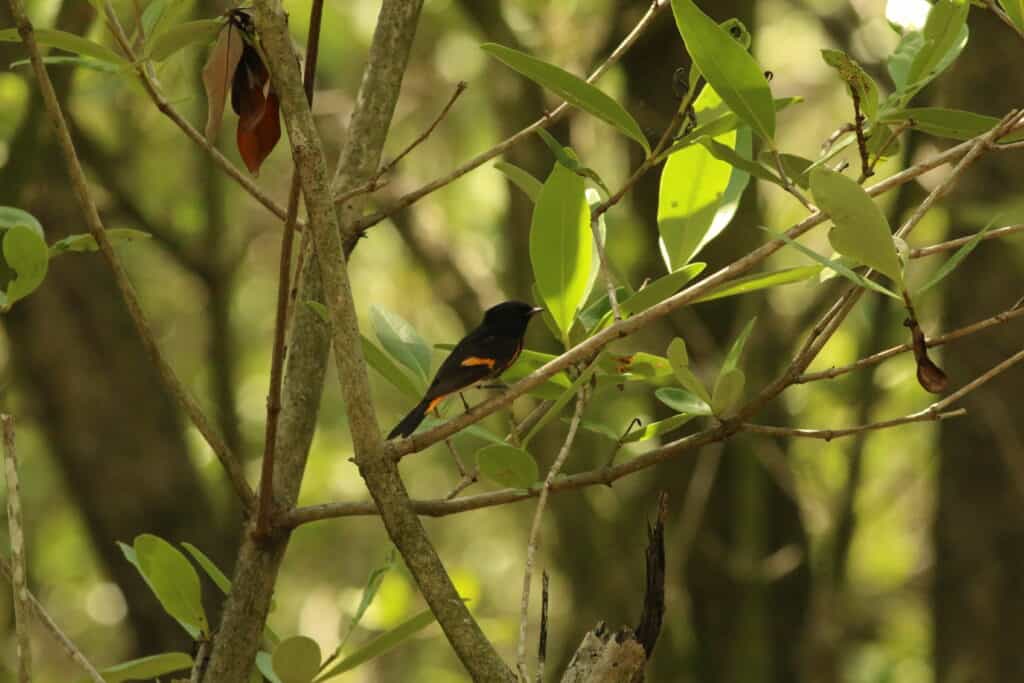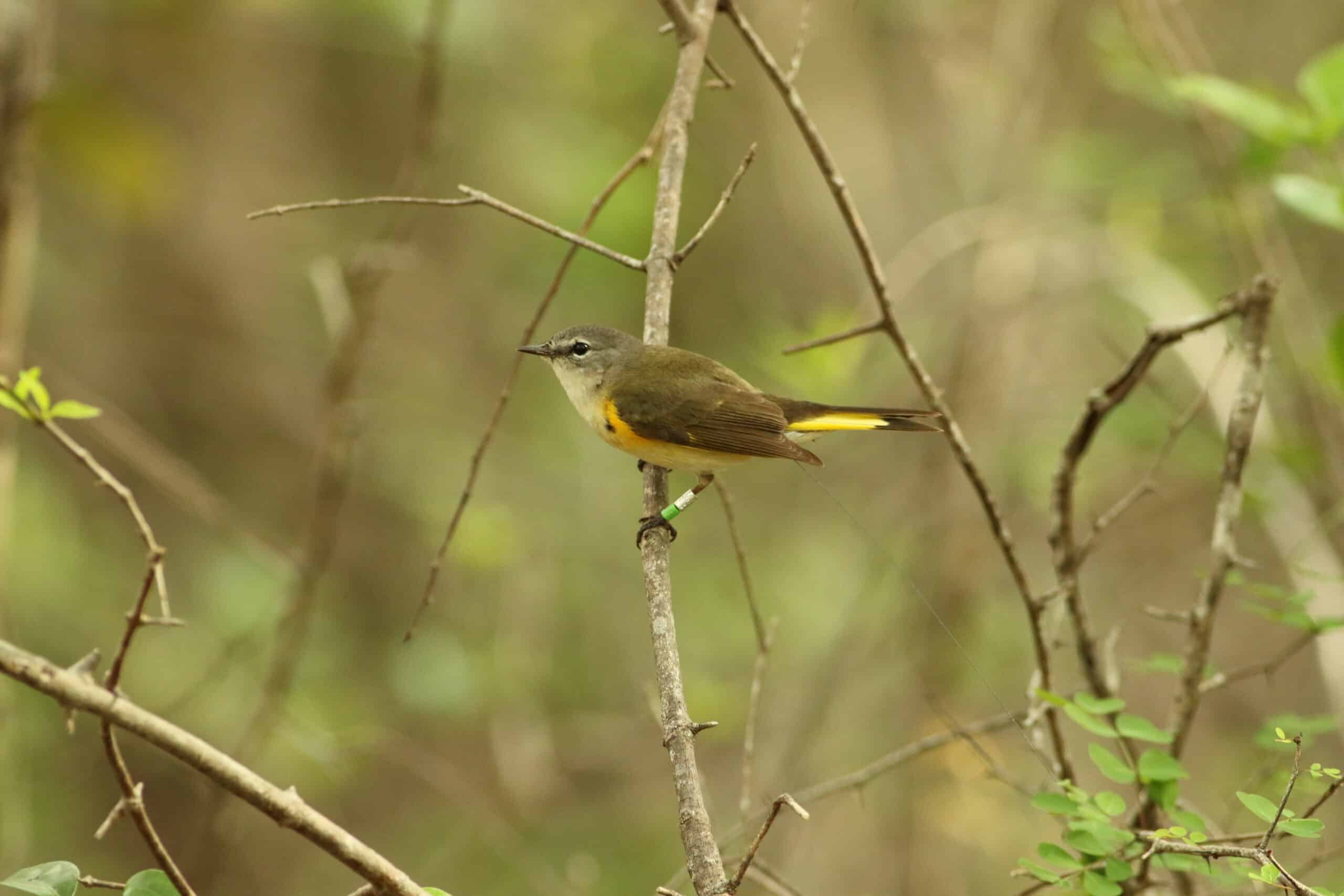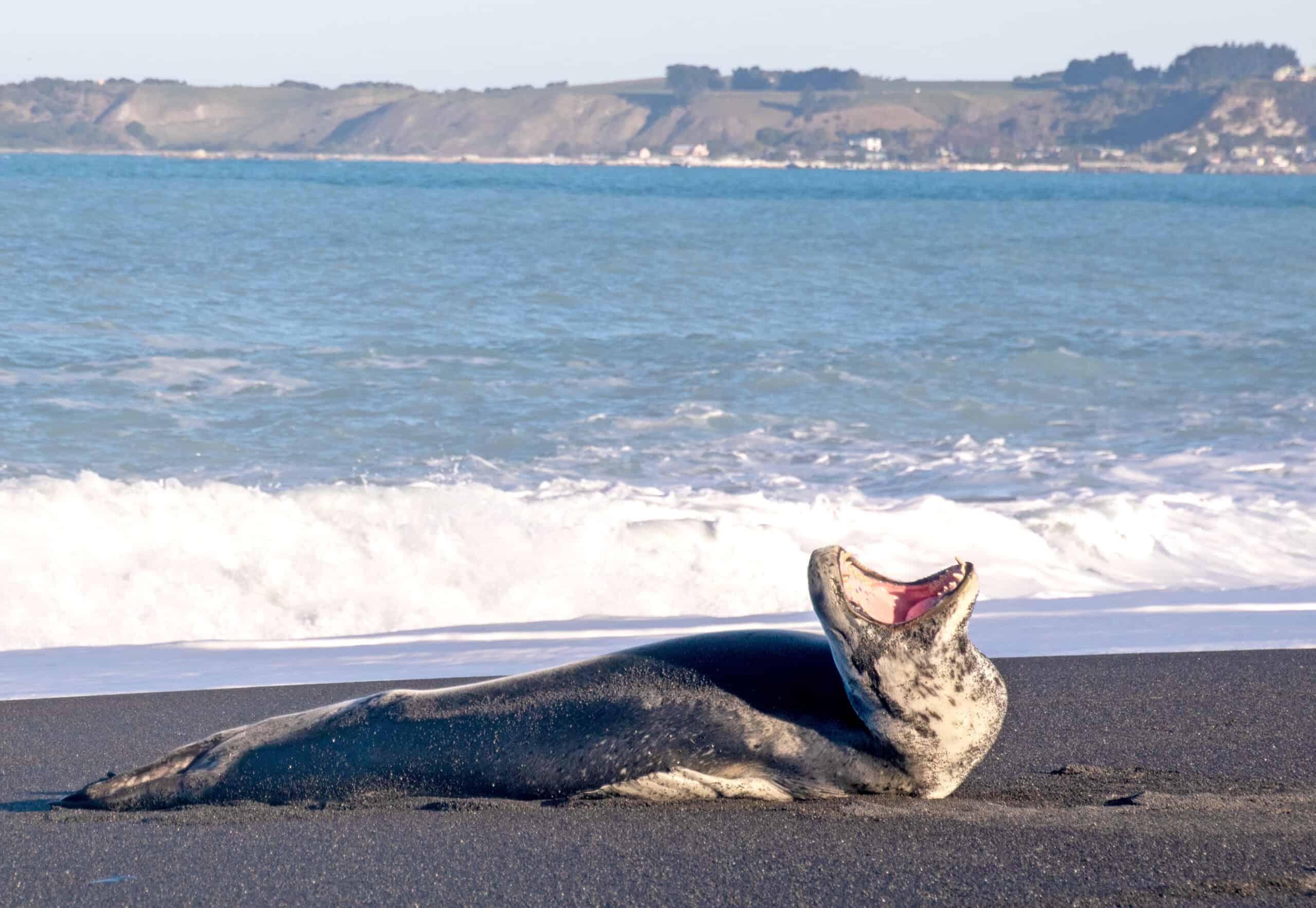Share this article
Wildlife Featured in this article
- American redstart
Amid climate change, migrating redstarts show flexibility
But their survival may still be at risk
American redstarts are speeding up their migrations to keep track with the effects of a changing climate, but that may come with consequences for their survival.
The colorful warblers spend their summers in parts of the United States and Canada, but they winter in warmer climates, including the Caribbean, Mexico, Central America and the northern edge of South America. As the climate changes, researchers looked to their wintering grounds for clues to how the birds were being affected.
“What birds do during the winter matters for what happens on their breeding grounds,” said researcher Bryant Dossman.
Knowing that the Caribbean is getting progressively drier, Dossman wondered what that meant for migratory birds that winter there. He figured they would have less food availability—American redstarts feed on flies and midges, which decline with less rainfall. Past research has shown that drier wintering periods result in later migrations.
As a graduate student at Cornell University, Dossman had access to a long-term American redstart (Setophaga ruticilla) dataset from Jamaica, which included information on vegetation conditions and the species’ departure timing, dating back to 1990.
Tapping into this data, along with tracking devices and stable isotope analysis of tailfeathers, he led a study published in Ecology to see if the birds were adjusting their migration speed to delays in the start of migration, and if their survival was being affected.

He and his colleagues found that the lack of food resulted in later spring migrations.
“Essentially, it’s taking birds longer to hit ideal departure fuel loads, and they delay departure because of that,” said Dossman, now a postdoctoral fellow at Georgetown University.
But the birds were making up for the late start by making faster flights north. Birds that left later than expected migrated almost 43% faster than birds that left on time. “They essentially were speeding up to catch up,” he said.
That was important, Dossman said, because showing up late to the breeding grounds could reduce their ability to reproduce. Still, delaying their migration resulted in a 6% reduction in survival. That may seem small, but it’s actually a big deal, Dossman said. “Migration is the riskiest period for migratory birds,” he said. “The added 6% difference to compensate is particularly substantial.”
It’s not clear what’s causing the decline in survival, but the researchers think it could be due to the birds trying to fill up quickly in stopover areas and spending less time avoiding predators. “The birds are adopting a risky migrating strategy in order to speed up their migrations,” Dossman said.

The redstarts’ “phenotypic plasticity” may help them compensate for climatic changes on the wintering grounds, he said, but it’s important that they have high-quality habitat on wintering grounds and stopover sites.
“With all of the risk factors faced during migration, mitigating some of these human induced ones is key to helping any species—redstart or not,” he said.
With climate change bringing springlike conditions earlier to North America, though, even arriving at the same time they used to may be too late.
“Birds are facing pressures from both ends of their spring migratory journey,” Dossman said, and that could leave them with a shorter window to migrate.
“Although we show that birds can compensate by speeding up their migrations, there is likely a limit to how much they can compensate. The question then would be, ‘What is that limit for migratory birds?’”
Header Image: An American redstart is fitted with a nanotag to track its movements. Credit: John Diener








